
Tesla Dip: Investing Insights in 2025 Market Trends
Welcome, potential investors and seasoned traders, to a deep dive into the complex world of Tesla (TSLA) stock. If you’ve been watching the market, you might have noticed some intriguing movements surrounding this electric vehicle giant. Despite reporting what many would consider challenging financial results for the first quarter of 2025, the stock hasn’t necessarily followed the expected trajectory. What’s happening here? How do we reconcile the company’s recent performance with the market’s reaction? This article aims to unpack the layers of the “Tesla dip” – not just in sales and earnings, but perhaps a dip in traditional expectations – and explore the forces currently shaping its narrative and future outlook.
As we navigate these complexities together, remember that understanding the market goes beyond just looking at the numbers on a screen. It involves dissecting management commentary, analyzing external factors, and appreciating the often-unseen currents of market sentiment and future speculation. We’ll use a blend of professional analysis and perhaps a few relatable analogies to make these dense concepts accessible. So, let’s begin our journey into the recent performance and future potential of Tesla.
Investors should be aware of the following key points regarding Tesla’s stock performance:
- Challenging financial results in Q1 2025 with notable declines in revenue and EPS.
- Despite poor financials, the stock showed resilience and even increased in value.
- Analyst expectations have been revised down, indicating skepticism about future profitability.
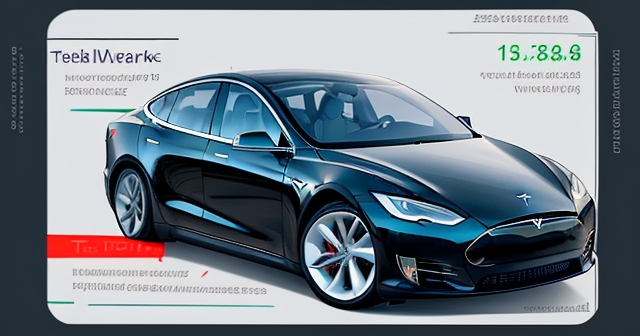
Let’s start with the hard facts reported in Q1 2025. Tesla’s financial performance showed significant declines. We saw a notable drop in both revenue and earnings per share (EPS). Specifically, EPS was down a substantial 40%, and revenue fell by 9% year-over-year. These aren’t minor fluctuations; they represent a significant cooling compared to previous periods of rapid growth.
Peeling back another layer, the automotive gross margins, if we exclude regulatory credits, were the lowest they’ve been since Q2 2012. This indicates pressure on the core profitability of selling electric vehicles themselves. Operating income also showed a loss when these credits were excluded, highlighting the reliance on non-core revenue streams to bolster the bottom line.
Perhaps most tellingly for near-term expectations, Tesla withdrew its delivery growth target for 2025. Pulling guidance is often a signal that management foresees challenges in meeting previous growth forecasts, or at least wants to temper market expectations significantly.
Now, here’s where things get interesting. Despite these undeniably soft Q1 numbers and tempered guidance, the market reaction wasn’t universally negative. In fact, the stock showed resilience and even moved higher in the aftermath of the earnings report. This brings us to a fascinating disconnect: how can a stock rally after such seemingly poor financial news? This is where the narrative often diverges from the immediate reality, focusing instead on future prospects and shifts in perceived risk factors.
Adding another layer to this paradox, analysts, who process these financial results and company guidance, significantly slashed their full-year earnings forecasts *after* the Q1 call. This means the consensus expectation for Tesla’s profitability in 2025 and beyond was lowered by Wall Street professionals, even while the stock price was reacting positively in the short term. This analyst reaction underscores that the underlying financial picture, according to expert models, remains challenging, despite the market’s more optimistic immediate response. This divergence between analyst models and immediate stock movement is a key puzzle we need to solve.
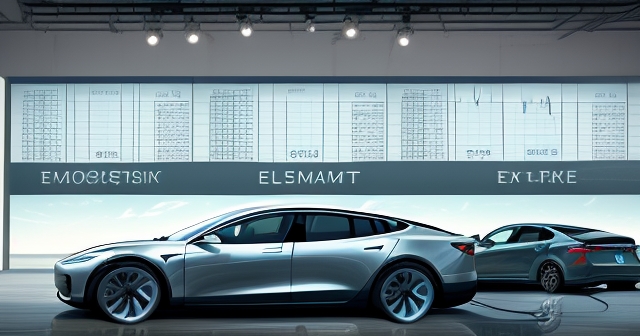
No discussion of Tesla is complete without acknowledging the significant influence of its CEO, Elon Musk. His actions, pronouncements, and even political involvement have a profound impact on the company’s brand, perception, and, as some argue, its sales.
Recently, Musk’s prominent role within the Trump administration’s Department of Governmental Efficiency (DOGE) has drawn particular scrutiny. While intended to streamline government operations, this involvement, coupled with Musk’s increasingly vocal political commentary on various platforms, has been cited by analysts and experts as a cause of significant “brand damage” for Tesla.
Think about it: Tesla initially built its brand on environmental consciousness and technological innovation, appealing strongly to a demographic that might lean politically liberal. Expert analysis, such as from Carey Morewedge and Justin Sullivan at S&P Global Mobility, suggests a fundamental shift in the “meaning” of owning a Tesla. It’s moving from a symbol of environmental virtue-signaling (often associated with liberal values) towards something potentially aligned with more conservative ideologies. This shift in perception, they argue, is directly impacting sales, particularly in traditionally liberal-leaning areas.
Data appears to support this. Reports on vehicle registrations, for instance, showed a notable dip in states like Massachusetts, where registrations were down 19% in January and 11% in February. Experts attribute this specific local dip, at least in part, to “liberal disdain” for Musk’s political stance. This aligns with the national trend of Tesla’s largest quarterly delivery drop in Q1 2025, suggesting a broader pattern potentially linked to brand perception issues.
However, amidst these headwinds, Musk also offered investors potential off-ramps and future catalysts during the Q1 earnings call. A key announcement was his plan to significantly reduce his time allocation to government work (DOGE) starting in May, though he might continue some involvement. Some analysts, like Dan Ives at Wedbush Securities, viewed this as a potential “turning point” – an opportunity for Tesla to potentially mitigate some of the brand damage linked to his political entanglement.
Musk also doubled down on his commitment to future technological breakthroughs. He maintained a highly bullish stance on robotaxis, affordable EVs, and even autonomous humanoid robots (Optimus) as the key drivers for Tesla’s long-term value. He framed these future ventures, particularly autonomy, as justifying the company’s valuation despite current financial pressures. So, while his political activities may be a drag, his focus on disruptive future tech is being presented as the reason to remain optimistic.
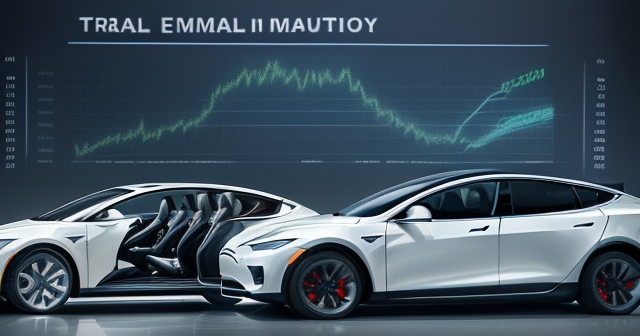
Let’s delve deeper into the factors contributing to the sales dip we’ve observed. As we discussed, the shift in brand perception is a significant element. The “liberal disdain” cited by experts isn’t just a theoretical concept; it translates into tangible actions like potential customers choosing alternative EVs or even existing Tesla owners selling their cars as a form of protest or disassociation. This change in who the typical Tesla buyer is, or is willing to be, could limit the company’s market expansion potential among certain demographics who were previously core customers.
Competition is also playing a role. The EV market is no longer solely dominated by Tesla. Traditional automakers and new players are bringing increasingly compelling electric vehicles to market, offering consumers more choices. While Tesla still benefits from its Supercharger network and brand recognition, competitors’ offerings are holding steadier in sales, suggesting that Tesla faces tougher competition for market share than in previous years. This necessitates winning back certain consumer segments or attracting new ones.
Beyond internal factors and direct competition, geopolitical dynamics are adding another layer of complexity. Trade tensions and tariffs, particularly those stemming from the Trump administration era (and their potential continuation or expansion), create a challenging international sales environment. While Tesla has built robust localized supply chains (over 85% local content in North America, over 95% in Shanghai), which makes it less susceptible to some tariff impacts compared to competitors importing vehicles, tariffs still pose challenges, especially when margins are already pressured.
More critically, these tariffs can trigger retaliatory actions from other countries, directly impacting Tesla’s market access and sales. Canada, for example, has frozen and excluded Tesla from its EV rebates, a direct consequence of the trade tensions. The United Kingdom is also reportedly considering similar actions. These geopolitical responses mean that even if Tesla builds cars locally, its ability to sell them affordably (or at all, if excluded from incentives) in key international markets can be hampered by political disputes unrelated to the quality or price of the vehicle itself. This highlights how global politics are increasingly intertwined with corporate performance for multinational companies like Tesla.
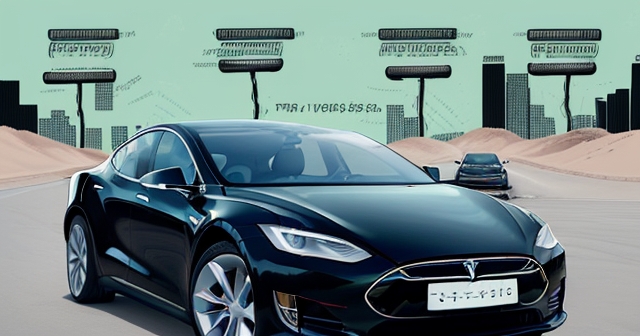
This brings us back to the central puzzle: why did the TSLA stock show resilience and even bounce after disappointing Q1 earnings and analyst downgrades? This phenomenon often baffles new investors, and it’s a prime example of how the stock market is forward-looking and often trades on expectations and narrative rather than just past performance.
The simple answer, often cited by market commentators and analysts like Dan Ives, is that investors chose to look *past* the weak Q1 numbers and focus instead on the future catalysts that Elon Musk highlighted during the earnings call and subsequently. The market, in this instance, seemed to be pricing in the potential success of upcoming initiatives rather than the current financial reality.
What were these catalysts that captured investor attention? Primarily, the highly anticipated robotaxi project and the confirmation of plans for a more affordable EV model. Musk’s commitment to a specific, near-term timeframe for the robotaxi launch (a pilot in Austin in June) injected a dose of tangible future potential into the narrative. Similarly, confirming that a lower-cost vehicle is coming relatively soon (mid-year production start) addressed a key concern about Tesla’s ability to tap into a larger, more price-sensitive market segment.
Furthermore, Musk’s indication that he would reduce his involvement in government work was perceived by some investors as a positive step towards potentially alleviating the brand damage that has been weighing on sales. If the political headwinds lessen, the thinking goes, perhaps sales trends could improve, making the current sales dip a potentially temporary issue.
So, instead of panicking over the 40% EPS drop or the pulled guidance, a segment of the market interpreted the earnings call through a different lens: one focused on a potential turning point marked by a shift in CEO focus, a concrete timeline for a revolutionary product (robotaxi), and a renewed commitment to expanding the addressable market with an affordable vehicle. This selective focus on future narrative over present data explains the initial positive stock reaction despite the underlying financial weakness and subsequent analyst downgrades.
Let’s specifically isolate and expand on the geopolitical factors because they are a significant external pressure point for Tesla. The trade policies enacted by governments, often driven by broader political agendas, can have direct and severe consequences for global companies.
Under the Trump administration, tariffs on goods from countries like China became a prominent tool of trade policy. While Tesla has worked to localize its supply chains, building extensive manufacturing capacity in North America and Shanghai, tariffs still impact component costs and the pricing of vehicles in specific markets. Low margins, as seen in Q1 2025, make the impact of any additional cost, including tariffs, more acutely felt.
However, the more significant geopolitical risk often comes from retaliation. When one country imposes tariffs or trade restrictions, affected countries may respond in kind, targeting prominent companies or sectors from the initiating country. Tesla, being a highly visible American company with global operations and sales, is a potential target for such retaliatory measures.
The situation in Canada is a clear example. As a response, at least in part, to US trade policies, Canada has taken actions that negatively impact Tesla. By freezing and excluding Tesla from its federal EV rebate program, Canada directly makes Tesla vehicles more expensive for Canadian consumers compared to eligible competitors. This isn’t about the car’s quality; it’s about political positioning and trade disputes translating into tangible market barriers.
The potential for the United Kingdom to follow suit with similar actions adds another layer of risk. If key international markets make it harder or more expensive to buy a Tesla, it directly constrains the company’s ability to grow sales globally, regardless of its production capabilities or technological advancements. This geopolitical risk adds a significant element of uncertainty to Tesla’s international sales forecasts and highlights the vulnerability of even large multinational corporations to factors beyond their direct control.
The concept of “brand damage” linked to Elon Musk’s political involvement goes beyond just influencing potential buyers’ decisions. It has manifested in more visceral ways, illustrating the depth of feeling among some former enthusiasts.
We’ve seen reports of some long-time Tesla owners expressing disillusionment and choosing to sell their vehicles. For many early adopters, owning a Tesla was a statement of environmental values and support for a revolutionary company. As the brand perception shifts, and as Musk becomes a more polarizing figure, this statement changes. For some, it’s no longer a brand they want to be associated with or advocate for.
Data suggests that this sentiment translates into decreased registrations. Interestingly, sales trends have mirrored some of these feelings amid rising competition. Analysts suggest that changes in consumer sentiment towards Tesla, closely linked to Musk’s public persona, might negatively affect potential customer behavior.
The backlash has, unfortunately, escalated in some instances to violent acts. The incident in Peabody, Massachusetts, involving extensive vandalism targeting Tesla vehicles and property, is a disturbing example. While the motivations behind such acts can be complex, the targeting of a specific brand in this manner, particularly one undergoing a public perception shift linked to its prominent leader’s political activities, cannot be entirely disconnected from the broader climate of polarization and brand redefinition we’ve discussed. This particular incident even prompted the involvement of an FBI task force, underscoring its severity and potential underlying factors.
These incidents of vandalism and owners selling their cars are symptoms of deeper issues related to brand loyalty, perceived values, and the increasing intertwining of corporate identity with the personal and political actions of its leadership. While the sales dip in registrations provides quantitative evidence of changing customer behavior, these more overt acts of backlash offer qualitative insight into the intensity of the negative sentiment among some segments of the population, particularly those who previously saw themselves as core to the brand’s identity.
This brand damage is not easily repaired. Reclaiming the narrative and rebuilding trust with demographics that feel alienated will likely be a long-term challenge for Tesla, potentially requiring a deliberate effort to re-emphasize core values independent of political affiliation.
Among the future catalysts driving investor optimism, the robotaxi project stands out. Elon Musk has long touted the potential of autonomous vehicles to unlock massive value for Tesla, envisioning a future where Tesla owners can earn income by sending their cars out as self-driving taxis, or where Tesla itself operates large autonomous fleets.
The announcement during the Q1 call regarding a “pilot” robotaxi launch in Austin, Texas, in June provided a crucial, near-term milestone for this long-term vision. This wasn’t just talk; it was a concrete date and location, giving investors something tangible to look forward to, even if the scale of the pilot is modest (initially expected to involve 10-20 modified Model Y vehicles).
Why is this pilot so important?
- Validation: It represents a real-world test of Tesla’s autonomous driving technology in a commercial, albeit limited, setting. Success here, even on a small scale, could provide crucial validation for the capabilities of their self-driving software.
- Regulatory Insight: Operating a pilot program allows Tesla to gather data and gain experience navigating the complex regulatory landscape surrounding autonomous vehicles, which varies significantly by jurisdiction.
- Narrative Building: For investors focused on the future, the robotaxi pilot is a powerful narrative hook. It shifts the conversation from current sales challenges to the potential for exponential revenue growth from autonomous services, a market estimated to be worth trillions globally in the future.
- Technological Advancement: While the pilot might use modified Model Ys, it’s a step towards dedicated robotaxi designs like the planned CyberCab, providing valuable insights for their development.
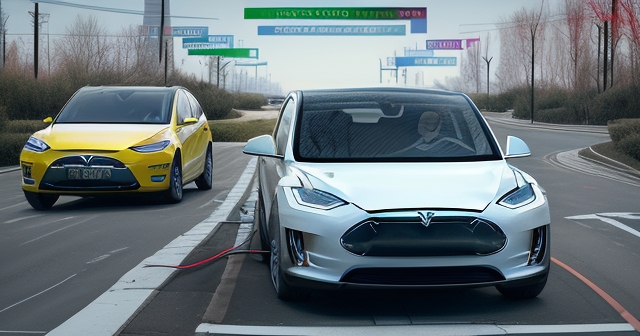
However, it’s crucial to approach this with a balanced perspective. A small pilot program in a single city is a far cry from a globally scalable autonomous taxi service. There are significant technical hurdles related to full Level 4 or Level 5 autonomy, regulatory approvals across diverse regions, competition from other companies developing autonomous tech, and the sheer logistical challenge of operating and maintaining a large fleet. The June pilot is a first step, not the finish line, but for investors prioritizing future potential over current financials, it’s a step in the right direction and a key reason for post-earnings optimism.
Another significant piece of the future puzzle for Tesla is the strategy surrounding more affordable electric vehicles. For years, the promise of a $25,000 Tesla has been dangled, representing a major opportunity to tap into a much larger segment of the global car market currently dominated by lower-cost internal combustion engine vehicles.
During the Q1 update, Musk confirmed that production for an “affordable” EV is expected to start by mid-year. Importantly, the details suggest this vehicle will resemble current Model Y or Model 3 platforms, leveraging existing manufacturing processes and components, rather than being an entirely new, bespoke low-cost design built on a next-generation platform as previously rumored. This approach could accelerate time to market and reduce upfront development costs, but it also presents potential trade-offs.
What are the potential implications of this affordable EV strategy?
- Market Expansion: The most obvious benefit is accessing a larger, more price-sensitive customer base, potentially driving significant volume growth in the coming years, especially in markets like China and emerging economies.
- Increased Production Volume: Higher demand from an affordable model could help Tesla utilize its manufacturing capacity more fully and achieve greater economies of scale.
- Competition: This segment is already highly competitive globally, particularly with the rise of capable and increasingly popular Chinese EV manufacturers offering compelling, lower-cost options. Tesla will face fierce price competition.
- Margin Pressure: Selling vehicles at a lower price point inherently means lower profit margins per vehicle, all else being equal. While volume can offset this, maintaining profitability while competing on price will be a key challenge, especially given the already pressured margins seen in Q1.
- Potential Cannibalization: There’s a risk that an affordable model could cannibalize sales of the higher-margin Model 3 and Model Y, impacting the company’s overall average selling price and profitability mix.
- Execution Risk: Scaling production of a new model, even one based on existing platforms, still carries execution risks.
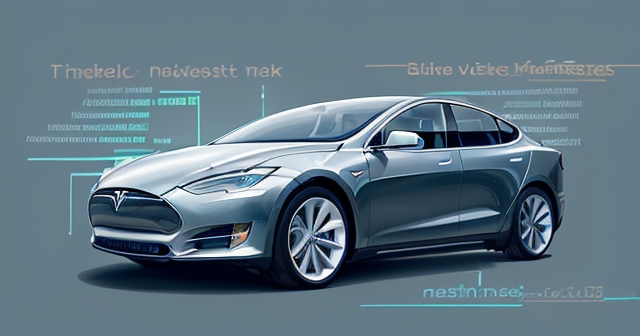
For investors, the affordable EV represents a clear path to potential volume growth, which is necessary for a company aiming for market dominance. However, the details about it being based on existing platforms and the potential for margin pressure and cannibalization introduce new questions. The market will be closely watching the production rollout and initial sales figures to assess whether this strategy successfully expands Tesla’s market without significantly eroding profitability.
Following the Q1 earnings report and the subsequent analyst calls, the views from Wall Street became particularly interesting, showcasing a range of perspectives on Tesla’s future trajectory.
As mentioned earlier, the consensus among analysts significantly lowered their full-year EPS forecasts *after* the earnings call. Firms like CFRA, represented by Garrett Nelson, pointed to the underlying financial weakness and the pulled delivery guidance as clear signals of a challenging year ahead. The lowered forecasts suggest analysts anticipate further pressure on profitability, potentially leading to a third consecutive annual decline in profits for Tesla, a significant deviation from its historical growth pattern.
However, other analysts, while acknowledging the Q1 weakness, placed more emphasis on the future catalysts. Dan Ives at Wedbush Securities, a long-time Tesla bull, framed the situation as a critical juncture, suggesting that Musk stepping back from government work and focusing on the robotaxi/autonomy vision could be a key factor in overcoming the recent “brand damage” and driving future value. His outlook, and that of others with a similar view, centers on the belief that Tesla’s true value lies in its software and autonomy potential, which the robotaxi launch could begin to unlock.
Even within firms, different perspectives exist. While Morgan Stanley’s Adam Jonas acknowledged the Q1 results and the uncertainties, his long-term view often hinges on Tesla’s transformation into more than just a car company, emphasizing its potential in areas like software, energy, and robotics (Optimus). This diversified view allows for optimism even when the core automotive business faces headwinds.
The contrasting analyst views reflect the complexity of evaluating Tesla. Are you valuing it primarily as an automotive manufacturer facing margin pressure and demand fluctuations, or as a technology company on the cusp of revolutionary breakthroughs in autonomy and robotics? The differing weights analysts assign to current financial performance versus speculative future potential explain the range in price targets and recommendations seen across Wall Street, even after the same set of earnings data.
For you, the investor, navigating the current environment around Tesla requires a nuanced understanding of these competing forces. The “Tesla dip” in performance and sales is a reality reflected in the Q1 numbers and registration data. The political and geopolitical headwinds are tangible risks impacting the brand and international market access.
Yet, the stock’s reaction also tells us something important: a significant portion of the market is prioritizing the potential of future catalysts – the robotaxi launch and the affordable EV – as the primary drivers of value. This creates volatility and a divergence between valuation based on current fundamentals and valuation based on future potential and technological disruption.
Here are some takeaways for investors to consider:
- Understand the Narrative vs. Reality: Be aware that the stock price may be more influenced by the narrative of future growth and innovation than the immediate financial performance. This can lead to sharp movements that don’t always seem aligned with the latest earnings report.
- Assess Future Catalysts Realistically: While exciting, robotaxis and affordable EVs involve significant execution risk, regulatory challenges, and intense competition. Research the specifics of the pilot programs and production plans, and temper expectations based on real-world timelines and hurdles.
- Evaluate Management Commentary Critically: While Elon Musk is a visionary, his pronouncements, particularly on timelines for revolutionary tech, have sometimes been overly optimistic in the past. Listen to the details of the plans but factor in the potential for delays or challenges.
- Consider External Risks: Geopolitical factors, shifts in political sentiment, and regulatory environments are not minor issues. They can significantly impact sales, profitability, and market access. Understand how these macro factors could affect Tesla’s performance.
- Diversification: Relying heavily on a single, volatile stock like Tesla based purely on future speculation carries significant risk. Ensure your overall investment strategy is diversified according to your risk tolerance and financial goals.
- Long-Term vs. Short-Term: Are you investing for Tesla’s long-term vision of autonomy and energy, or trading based on near-term news and technical indicators? Your investment horizon should guide your analysis and decision-making.
| Key Metrics | Q1 2024 | Q1 2025 |
|---|---|---|
| Earnings Per Share (EPS) | $X.XX | $Y.YY |
| Revenue Growth | X% | -9% |
| Automotive Gross Margins | X% | Lowest since Q2 2012 |
The coming months, particularly the proposed June robotaxi pilot launch and the mid-year start of affordable EV production, will be crucial test cases. They will provide the first real-world data points on whether the narrative driving investor optimism can translate into tangible progress and eventually, improved financial performance. For you, understanding these dynamics is key to making informed decisions in a complex and fascinating market like Tesla.
Table of Contents
Toggletesla dipFAQ
Q:What is contributing to Tesla’s recent stock volatility?
A:Tesla’s stock is influenced by a combination of disappointing Q1 earnings, reduced guidance, and investor focus on future catalysts such as the robotaxi project and an affordable EV strategy.
Q:How is Elon Musk’s political involvement affecting Tesla’s brand?
A:Musk’s political actions have been perceived as damaging to Tesla’s brand, shifting consumer sentiment away from environmentally conscious values to more polarized political associations.
Q:What are the expectations for Tesla’s upcoming affordable EV model?
A:The affordable EV model is anticipated to start production by mid-year, with hopes of expanding Tesla’s market to price-sensitive consumers, but it carries risks regarding margin and potential sales cannibalization.
You may also like
Calendar
| 一 | 二 | 三 | 四 | 五 | 六 | 日 |
|---|---|---|---|---|---|---|
| 1 | 2 | 3 | 4 | 5 | 6 | 7 |
| 8 | 9 | 10 | 11 | 12 | 13 | 14 |
| 15 | 16 | 17 | 18 | 19 | 20 | 21 |
| 22 | 23 | 24 | 25 | 26 | 27 | 28 |
| 29 | 30 | 31 | ||||
發佈留言
很抱歉,必須登入網站才能發佈留言。